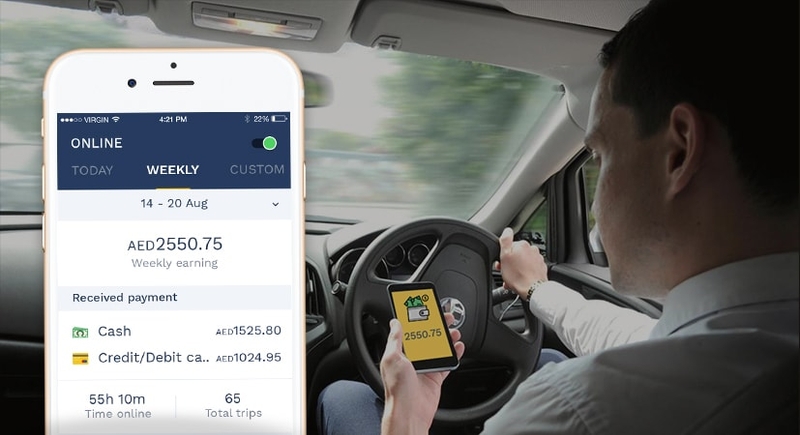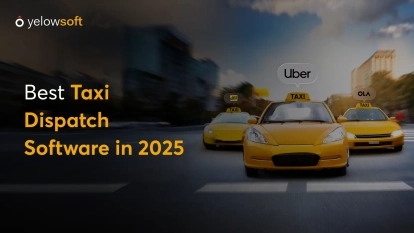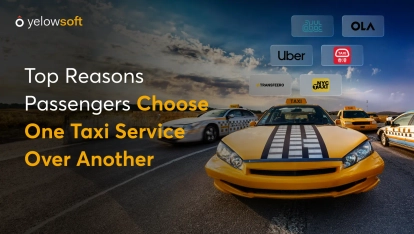Like every morning, Jay took an elevator to the parking and pressed the car keys. Apparently, the car neither blinked or buzzed. His car was in service that day. He forgot. A guy from his apartment agreed to drop him. He was heading in the same direction.
This is when it struck him. So many people head in the same direction, office and back, every day. Why not create an app to bring all those on a single platform so that they can share ride with each other and thus save money and environment. So Jay contacted a taxi mobility solution provider in his area and developed a ride-sharing passenger app.

Not just Jay, thousands of people in major cities around the world rely on a ride-sharing app similar to Jay’s for their daily commute.
Eventually, Jay started generating revenue with the help of the platform. He earns a decent living by taking a cut on every ride taken through the platform.
Developing a ride-sharing app is profitable business and you would be helping people cut on fuel expenses and environmental hazards as long as you follow these checkpoints.
1. Do not add unnecessary features
Users of a ride-sharing app expect the app to work, more or less, like Uber. They book a ride. It picks them up, drops to their destination, collects money. You rate the experience and driver.
So an app that works like Uber’s passenger app should work as a ride-sharing app too. Of course, there are a few features that exclusive to ride-sharing apps for example creating a new ride.
To simplify things, the app at the start must ask the user whether he wants to drive or ride. Or you can go the separate ways and develop a different app for drivers and riders. But I recommend going for a single app with the option to switch between rider or driver.

While creating a new ride the driver, provided he is already registered on the app, needs to specify his route, car type and build, no of seats available and any restriction—whether smoking allowed or not.
Here are some of the features I shortlisted
a. Login/ signup
b. Booking Window
c. Fare calculator
d. Real-time tracking
e. Digital payments
f. Push Notification
g. Ratings and Reviews
h. Support/ Help
2. Integrate payment gateway
Stripe is what we prefer here at Yelowtaxi but you are free to go with the payment gateway of your choice. Customers often prefer Braintree over Stripe owing to its popularity because of Uber. PayPal, although has been a consistent choice over the years, is preferred as the secondary payment method to Stripe or Braintree. Apple Pay and Google Pay are gaining on popularity make sure the payment gateway you choose when developing carpooling mobile app.
Read More: Commuter between driver and rider taxi app
If you are operating in China, WeChat Pay and, newly launched, Weibo Zhifu must be the option in your payment gateway. In India Unified Payments Interface (UPI) is gaining on popularity.
3. Include a wallet
The payment a user receives as a driver must be stored in a virtual wallet inside the app from where can withdraw a desired amount in his bank account whenever he wants.

I suggest look for an existing virtual wallet provider in the market and interface it with your app. Popular virtual wallets have many merchants as their partner, allowing your users to pay them from the wallet itself without the need to withdraw the requisite amount to their bank account.
An auto-transfer functionality will please drivers who are not comfortable with wallet usage.
Read More: Role of GPS tracking in Taxi Business
4. In-app chat support
No app is perfect. The same goes for the services they deliver. In addition, ride-sharing solutions are prone to glitches, error and security threats. There may occur a chance when one of your users is wrongly deducted a higher amount, when a user can’t sign in to the app, or his account is suspended.

If occurs such a chance, a grieving user will seek your help as a publisher and as with most of the features on your app expects the support to be provided instantly without him having to leave the app. If email and call are the only options, he must leave the app. You can save the day with in-app chat support option. Integrate a chatbot with the app if you have to.
5. Restrict signups
If I want to mug someone, I would enroll into one of those carpooling apps available, book a long trip that passes through deserted corners of the highway and mug the guy right there. Ingenious plan, isn’t it. What if you’re were the one of the sharing ride with this guy.
You can’t let this to happen with anyone. Thus, it is important that you restrict registration to the ride-sharing app. Only let people with certain amount of repo. You can make it an invite only app but that’ll affect your userbase. But there are many ways. You can confirm their social media accounts.
The point is to keep the wrong user out not to annoy a genuine user of the app. So mark the balance.






